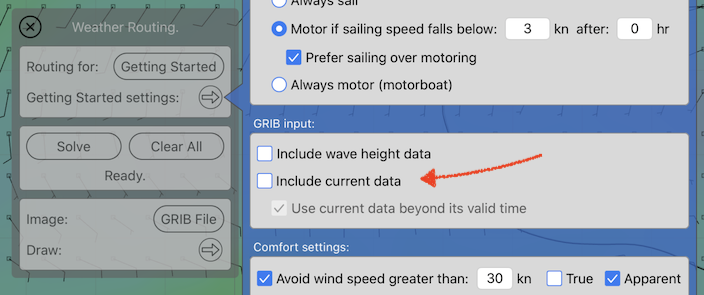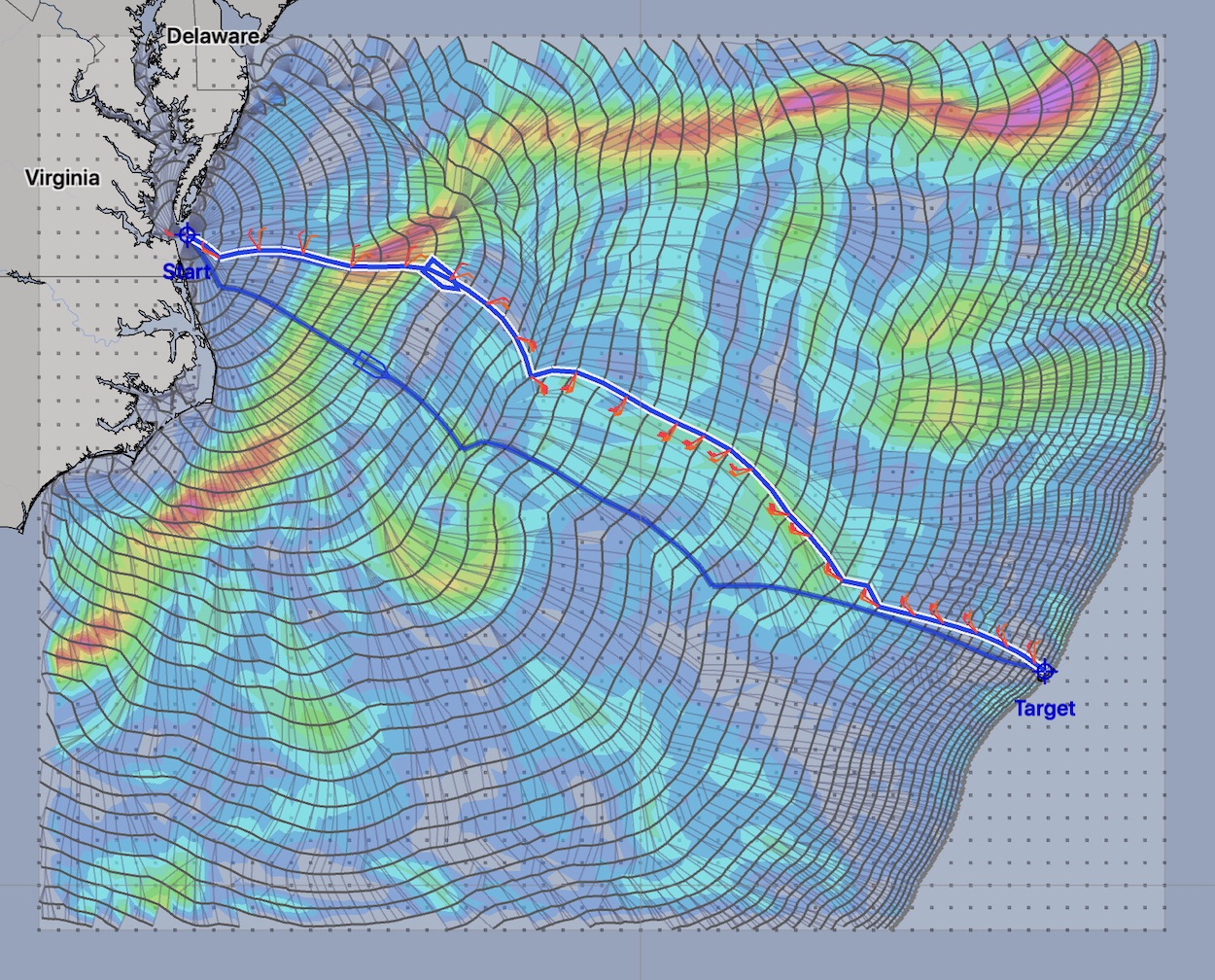Note that this example is for a route between Chesapeake Bay and Bermuda. What is missing from the previous weather routing solution is for the solver to take ocean currents into consideration. The Gulf Stream is a rather important feature in these waters.
The solver can be easily configured to accept ocean current data. This is done in the vessel settings editor:
 Current settings on macOS
Current settings on macOS Current settings on iPad / iPhone
Current settings on iPad / iPhone(Note that while the interface has a different appearance on each platform, it behaves the same way. Future examples will only show one of the platforms.)
Click on the Include current data option. By default, the current data will be used outside of its valid forecast time, you have the option of disabling this. (Current data is often not available for the same forecast duration as for the wind forecast models.)
There are two global current models available: RTOFS or OSCAR. In this region of the world, there is also a high resolution NCOM model, called NCOM US East.
After downloading the current data you want to use, and configuring the solver to use current data, run the weather router solver again.

Notice that two paths are being shown, one with ocean current and one without. The analysis image is showing the ocean current speeds for the selected path, the one which used current data in its generation of the paths. (This ability to choose the analysis image is described in a later topic, soon.)
The way the two paths were generated in the image above was by creating a second vessel. The new vessel was set up with the same performance settings as the main vessel, same starting point and time, same everything except that one vessel enabled the use of current and one did not.
The path that considers the current in its solution arrives around 6 hours before the path that does not. For a cruising sailor, 6 hours may not be a big deal. Cruisers are likely more concerned with comfort and the time of arrival (daylight preferred of course.) If you are a racer, a 6 hour difference is quite a lot. Racers may want to use this two vessel technique to compare the different current models, having one vessel use NCOM and one RTOFS.